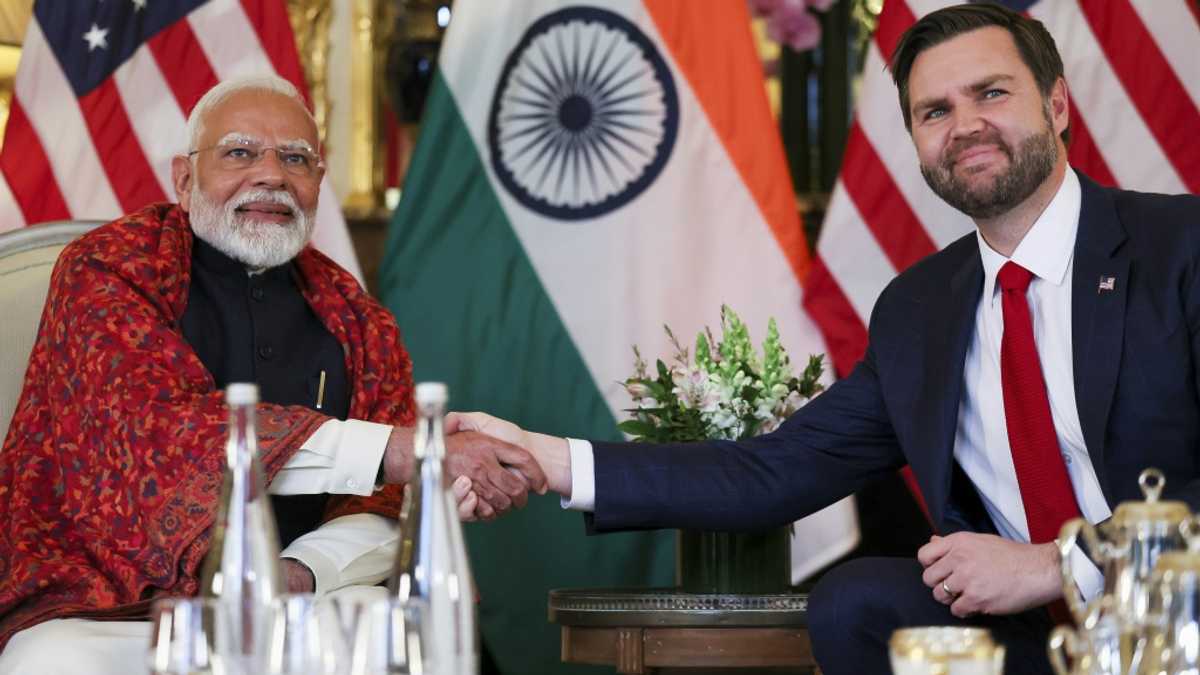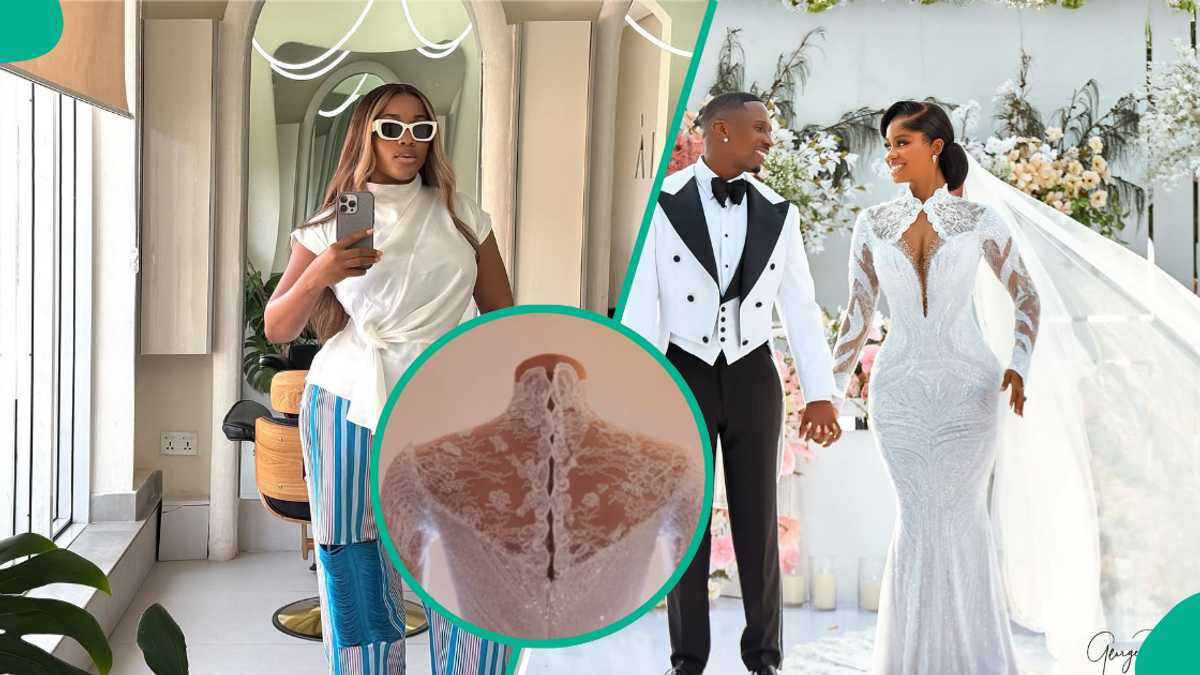12 Visual Merchandising Strategies to Improve Your Store
Visual merchandising is the practice of displaying your product and organizing your store to drive sales, enhance your brand, and provide a stimulating and enjoyable shopping experience for customers. This article outlines a dozen game-changing visual merchandising techniques and how to implement them in your business.
Your store layout — the strategic arrangement of shelves, fixtures, and furniture — guides how customers move through your retail space. An effective layout naturally directs shoppers toward featured products, keeps them engaged, and makes their experience enjoyable. Ultimately, it can influence the story your store is telling and the sales you can generate.
To display your product more effectively, here are five actionable and strategic store layout tips:
For more detailed information and guidance on how to plan your store layout, check out our article on planning your store layout.
Colors play a huge role in retail visual merchandising because color psychology shows customers respond differently to specific color palettes.
Here’s how to use color in your visual merchandising displays:
Scroll through the slides to see visual merchandising examples showing this technique:
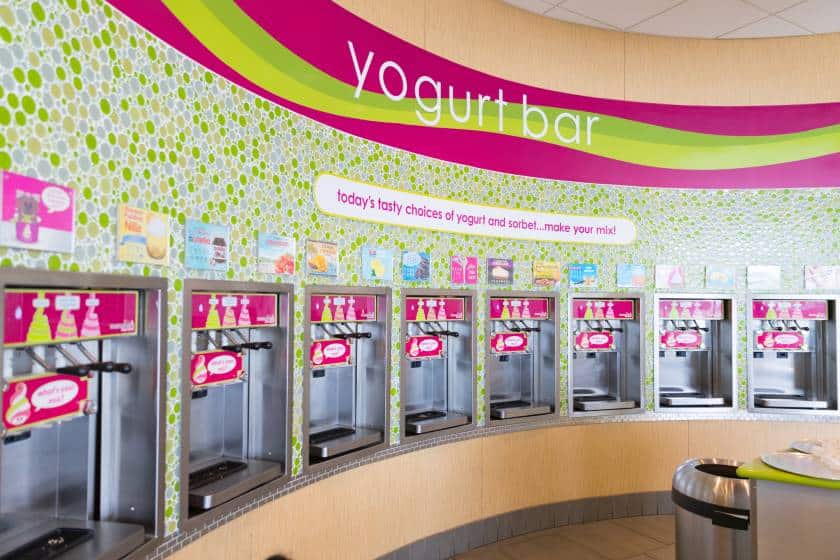
Menchies uses bright colors to draw people’s eyes to their soft serve dispenser.

The blue color palette in this luxury store creates a serene and soft environment for shopping. (Source: Adobe Stock)
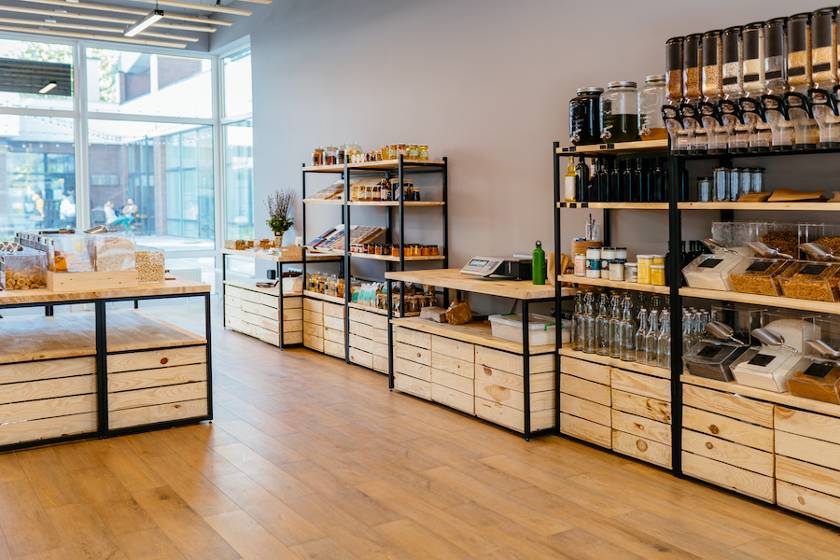
A neutral color palette creates a modern and minimalistic feel in this grocery store. (Source: Adobe Stock)
Like color palettes, proper lighting techniques help draw shoppers’ attention to specific parts of your store or display. Lighting can also influence the mood and behavior of your store visitors. When done right, lighting can significantly improve your in-store experience and drive sales.
There are four primary types of store lighting that you need to include in your store: ambient, accent, task, and decorative lighting.
Here are a few quick visual merchandising tips to effectively layer lighting in your store:
Here are examples of visual merchandising displays that use retail lighting to their advantage:
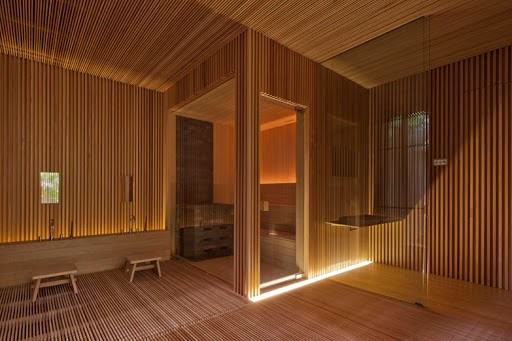
A spa wants to create a mellow and calm mood, so it chooses sparse warm ambient lighting for its space. (Source: DesignspiritsCo)
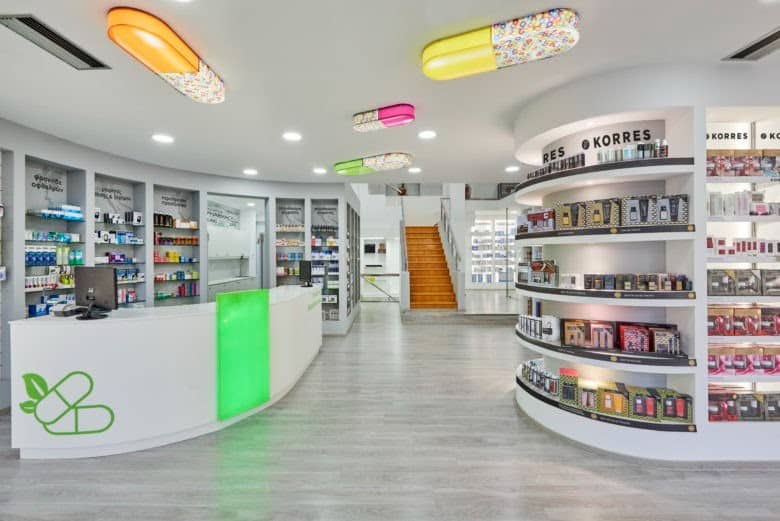
A medical supply store, on the other hand, selects brighter and cooler ambient lighting to maximize visibility and contribute to a more energized and sterile atmosphere. (Source: retaildesignblog)
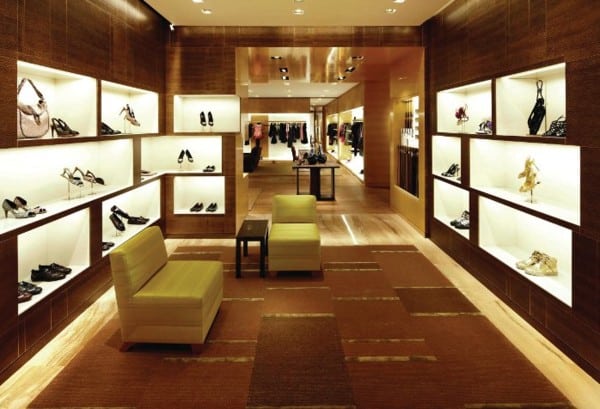
A smart lighting design can be used to highlight or draw attention from certain products, as you can see in this boutique. Here, accent lighting is used to highlight certain products and draw the eye. (Source: Shopify)
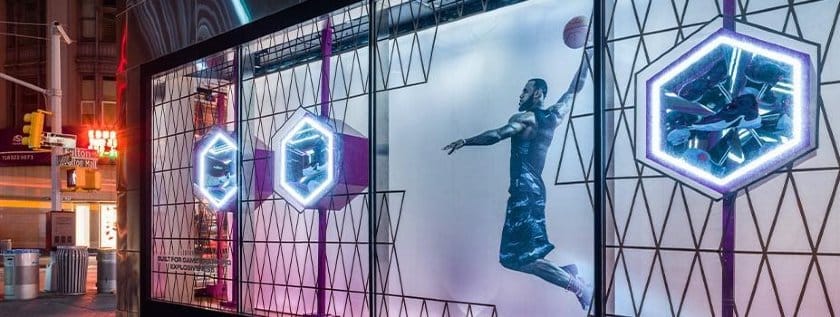
You can also use lighting to create bright visual displays that will catch your customers’ eyes. Decorative lighting is a great way to entice customers.
(Source: Environmental Lights)
Effective signage can enhance your brand image, highlight products or features, guide your customers to specific items, and share information with your shoppers. Just like price tags, clear and well-placed signage is crucial for boosting sales in your store. Types of signage include promotional signs, window displays, wayfinding signs, and safety notices.
There are a few major dos and don’ts when designing and placing your signs.
Follow these tips to maximize your signage’s impact:
Here are great examples of how signages contribute to visual merchandising:
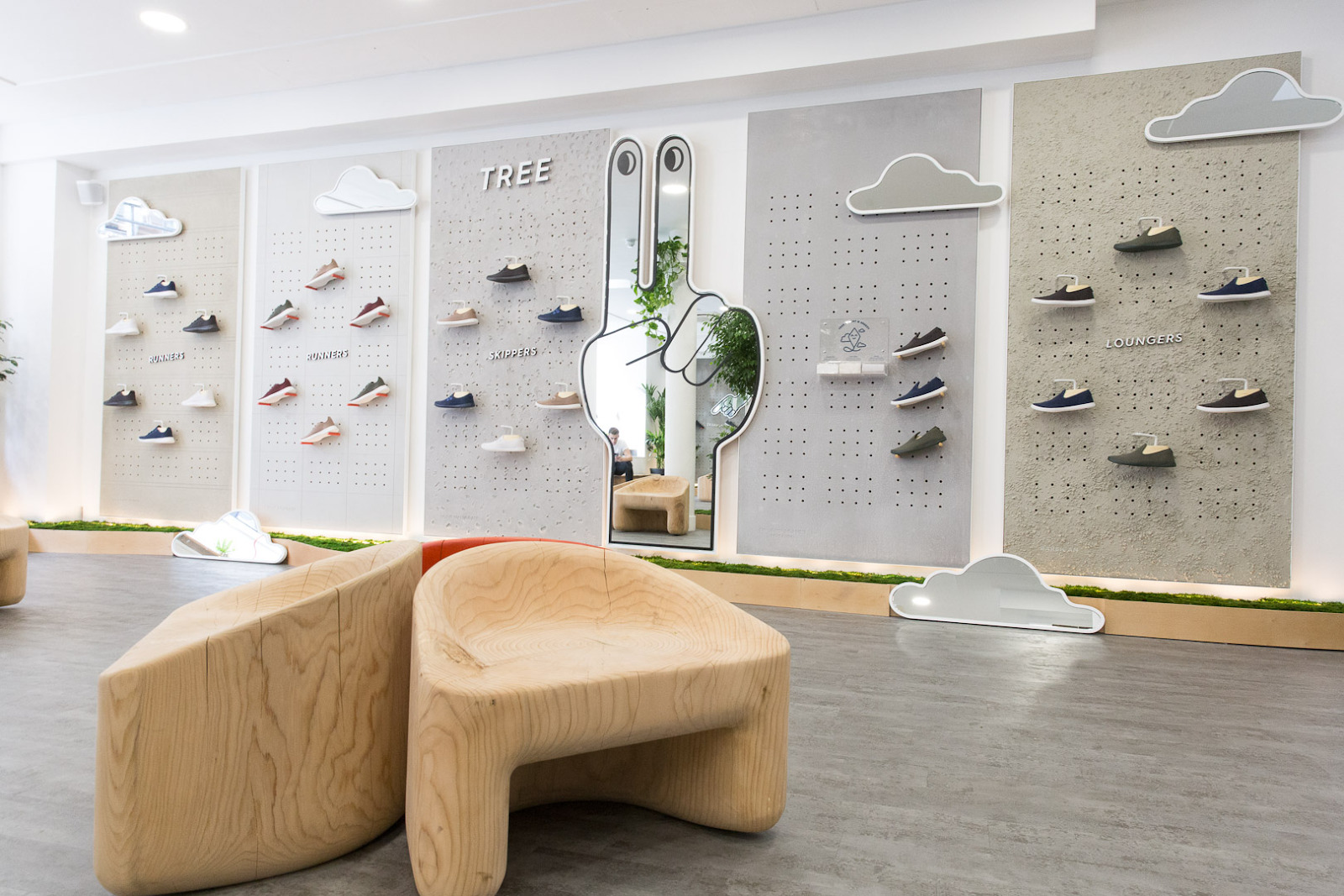
Allbirds uses in-store signage to inform, decorate, and reinforce their brand. Take a look at how they use signage to clearly show customers which category their shoes belong to. (Source: Lisa Hopey)
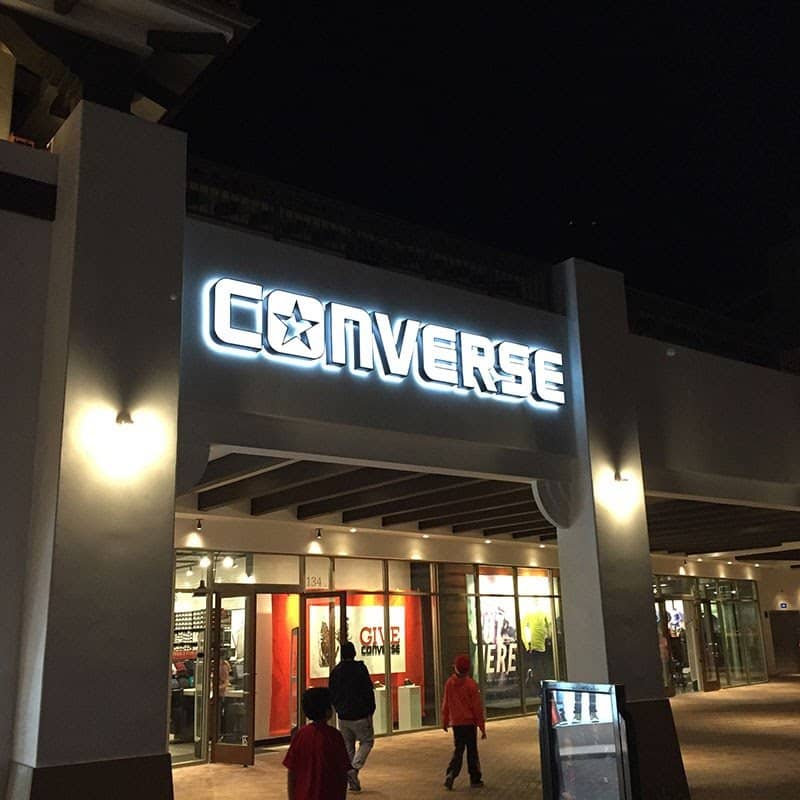
A well-lit sign outside a Converse store draws customers’ interest. (Source: Starfish Signs)
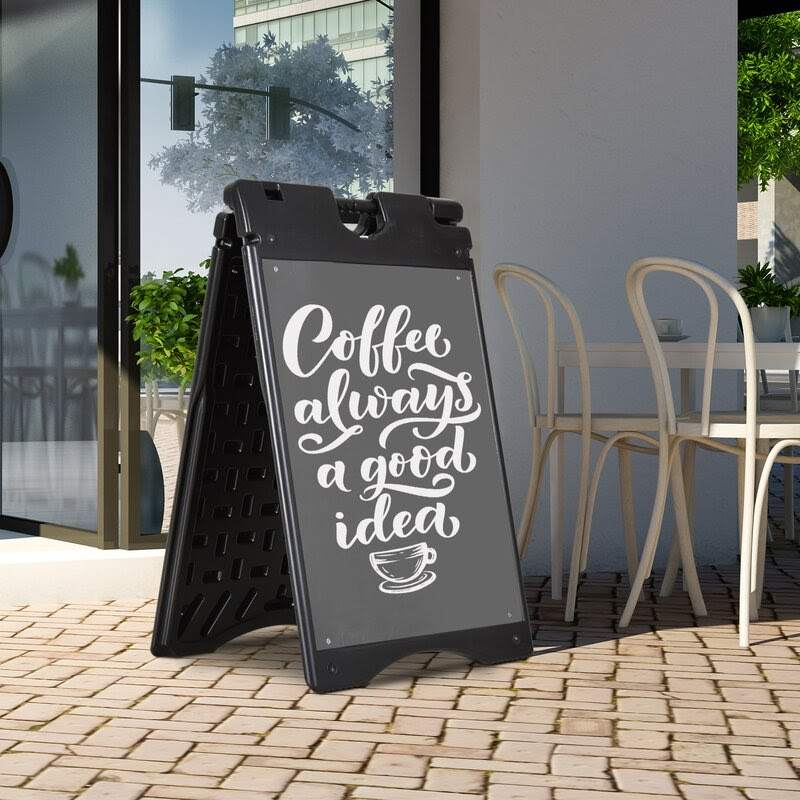
Folding sidewalk and lit window signs are great examples of eye-catching signage that work well for exterior displays. (Source: Aosom.com)
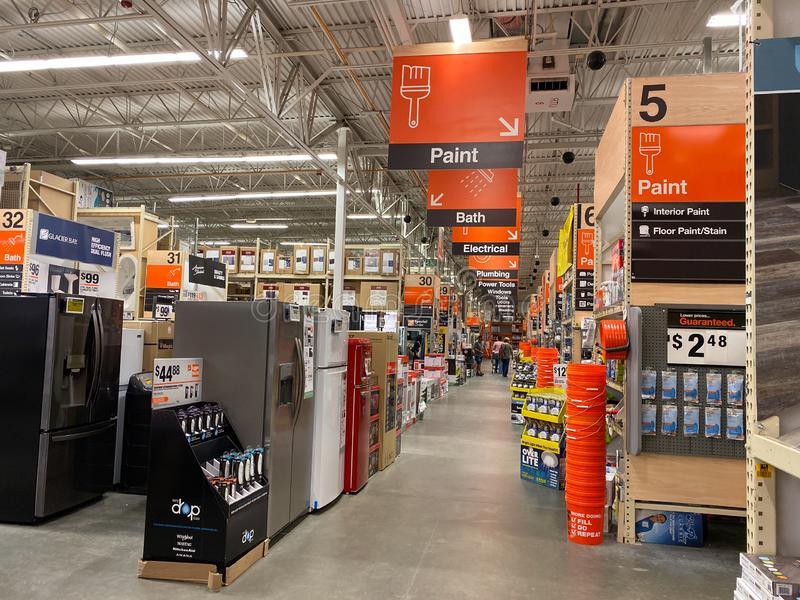
You can also use signs to help customers find their way through your store.
(Source: Dreamstime)
Exterior displays are all about capturing people’s attention and intrigue; they will often be the boldest visual display in your entire storefront. Think of your exterior signage as the greeting your business gives out into the world. Is it inviting enough to beckon the passerby inside?
Read our guide to designing storefront signs.
POP displays are temporary digital or physical displays located around products you want to draw attention to or advertise. Since an average person retains 65% of visual information after three days — far more than auditory information — placing POP displays can significantly increase message retention.They are a great way to create a visual stimulus around a product and make customers engage and remember your store.
POP displays can promote product features, showcase deals, break up clutter, or draw attention to an exciting item. They are also great for breaking up clutter in high-volume product areas, filling open spaces, and guiding customers through your store.
Here are some visual merchandising guidelines when working on your POP displays:
Take a look below at some great examples of POP displays:
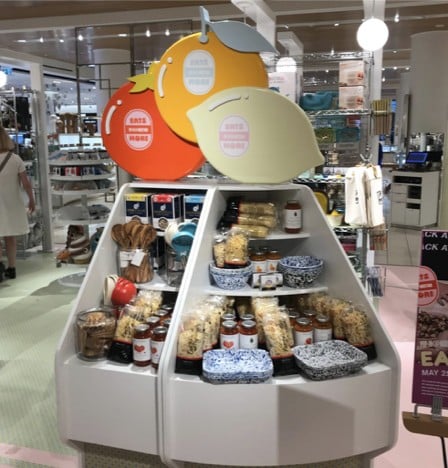
This POP display in a home goods store advertises cooking supplies.
(Source: Grand Image Inc.)

This holiday-themed display for tape shows customers right where one of their wrapping essentials is located. (Source: Assemblies United)

This display for the candle brand Oldman & Magpie showcases the wares in one eye-catching spot. (Source: Pinterest)
For more information on how POP displays can work for you and other pop-up display options, check out our article on different display options.
Retail focal points are deliberate visual arrangements to create a sensory impact, with the ultimate goal of influencing purchasing behavior. Focal points do not necessarily have to be overt ads like POP displays. They can also be design features that create a narrative for your customer, like a group of mannequins, a piece of wall art, or a table display. These focal points create visual interest and promote customer involvement without creating a shoppable space.
When figuring out how you want to place your focal points — and what you want them to be — you will need to consider three main things:
Take a look at how these retailers created focal points in their stores:
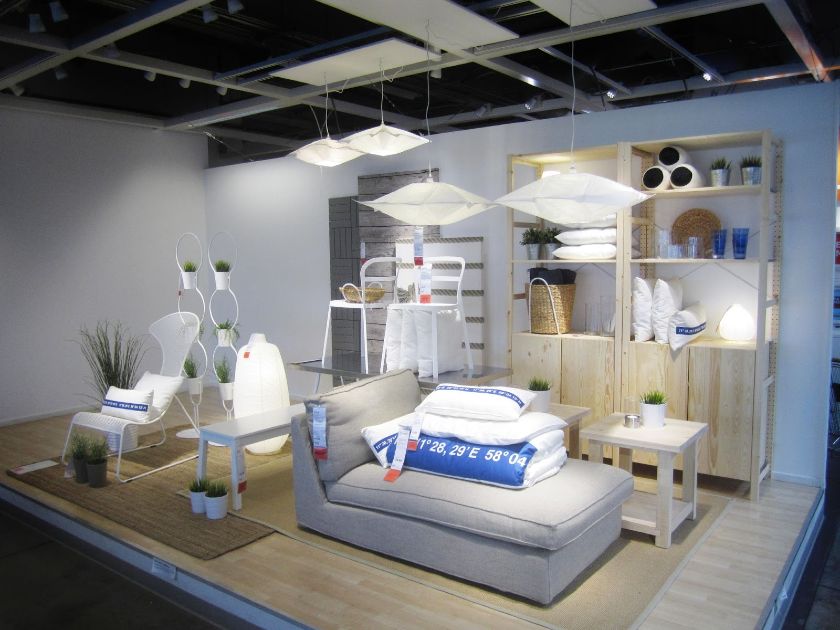
A focal point display in a home goods store draws attention to new products.
(Source: Juliequidiagan)

This arrangement of the mannequin and tables helps draw people in and guide them to key products. (Source: Adobe Stock)
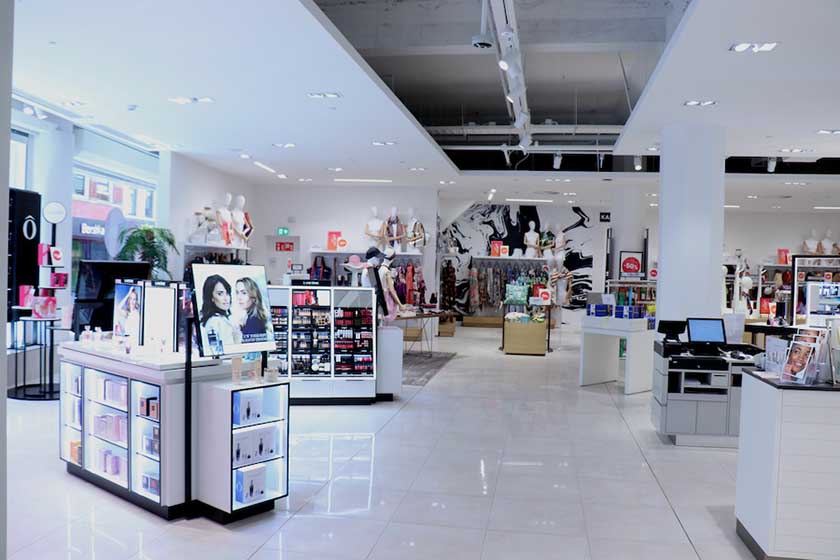
This cosmetics store is full of small table focal points to highlight brands and new products. (Source: Adobe Stock)
At the end of the day, you want your business to tell a story about who you are, what you stand for, and what people can expect from you. Customers crave this narrative — they want to understand and assign meaning to the places they shop. This is where storytelling comes in.
Think of your business’s story as the way you want your customers to describe your store when they talk about it to a friend. To best tell your story, ensure that each merchandising element makes sense as part of a complete visual narrative. Cohesion plays a major role in creating a discernible story.
For example, if you were starting a gardening store, you might want customers to walk away feeling like they just left a quaint English country garden or maybe a luxurious chateau estate. Both of these stories require different merchandising strategies to make them clear, but if merchandised effectively, they would leave customers with a clear picture of who you are and the story you are telling.
A great example of effective storytelling via merchandising is the brand Free People. When customers walk away from a Free People storefront, they are left feeling like they just experienced a girly, bohemian escape. Pale colors, soft lighting, whimsical decor—everything fits into Free People’s girly-boho narrative.
Not only that, but Free People’s visual merchandising story is perfect for the brand. Its customer demographic is primarily young girls and its clothing leans toward bohemian style. Thus, Free People’s story is in line with both its customer base and product.
Take a look at how Free People told their brand story through visual merchandising:
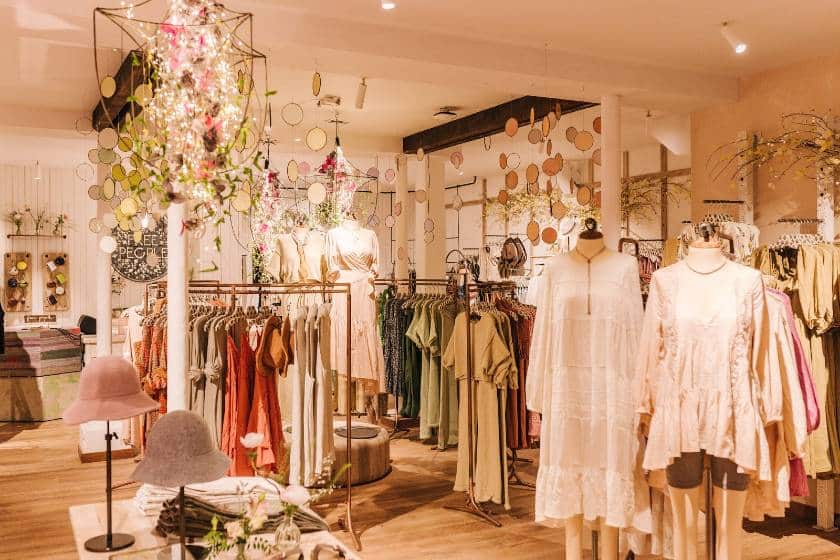
Free People uses pale colors and whimsical, girly decor to create a narrative in their stores. (Source: Fashion Network)
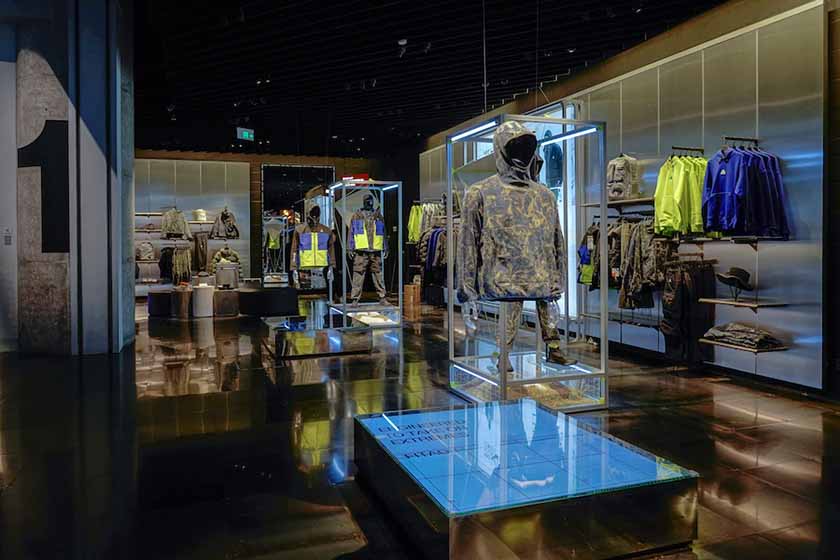
The dark and high-tech feel of this store helps to tell a story of innovation and toughness for this outdoor store. (Source: Adobe Stock)
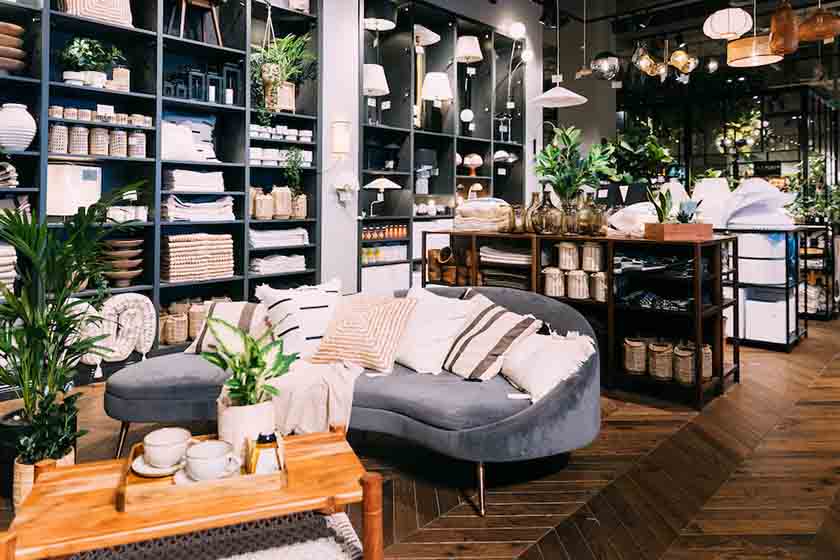
Serene colors and product arrangements tell the story of a home in this furniture and decor store. (Source: Adobe Stock)
Here’s how to effectively build your brand story through visual merchandising:
Thoughtful product placement guides customers toward specific items, encourages impulse buys, and ultimately increases your store’s sales. Whether it’s an elaborate focal-point display or simply placing popular items at eye level, strategic product placement helps shoppers easily discover products you most want them to buy.
Here are some key product placement strategies to consider:
Take a look at how these retail businesses leveraged product placements in their stores:
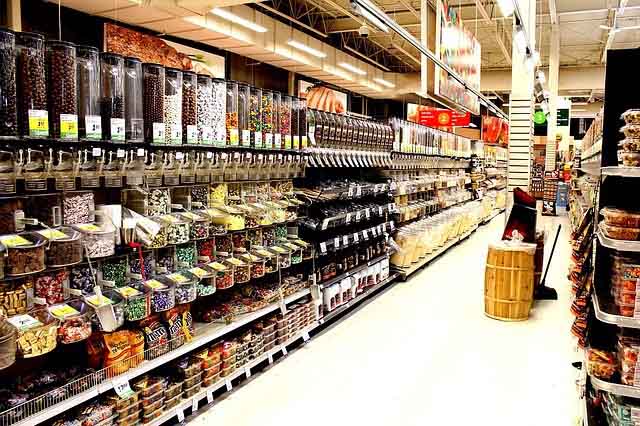
This store placed its most expensive, weighted candies at eye level and its less expensive items near the ground. (Source: Surveillance Security)
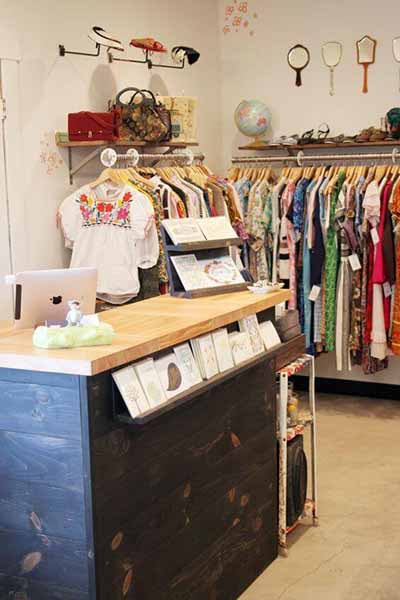
This store added greeting cards to its checkout counter to inspire impulse buys and keep people shopping as their things get rung up. (Source: Magento Blog)
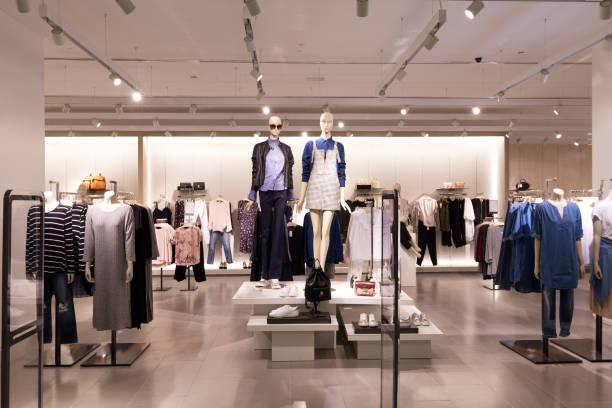
Adding top sellers or new products to the front of this store helped draw shoppers in and get them exploring. (Source: iStock)
Bundle related products together to boost your units per ticket (UPT). Grouping complementary items — such as pairing sweaters with matching shirts or dresses — encourages customers to purchase multiple items at once, simplifies their shopping experience, and ultimately increases your sales.
Here are some bundling product display examples:
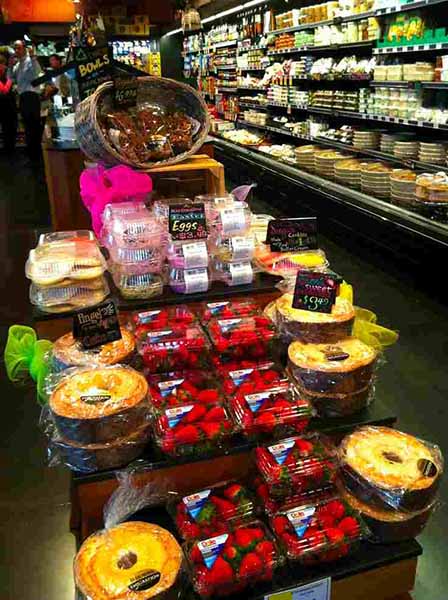
A grocer bundles all the ingredients for strawberry shortcake together in one display to show customers how the ingredients can work together and encourage a multi-item purchase. (Source: Pinterest)
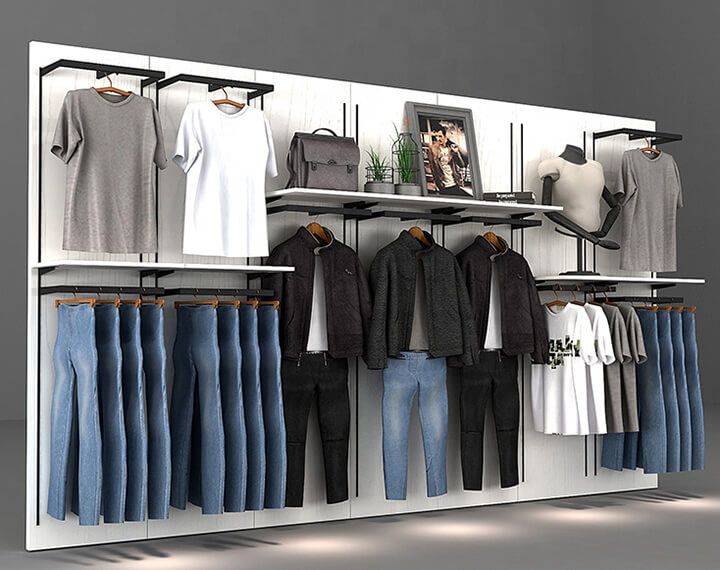
A men’s store bundles together complete outfits on their wall display so it is easy for customers to see how products can work together. (Source: Pinterest)
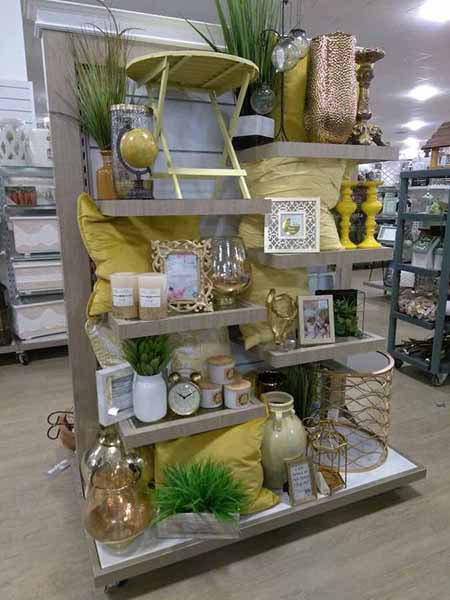
Spring decor is displayed together to show customers how multiple items could work together in their homes. (Source: Pinterest)
In retail, customers often relate space with luxury — the amount of space in a store and in between products conveys volumes. Just notice how luxury brands put a lot of space between displayed merchandise and how discount retailers tend to overfill their shelves with items.
Known as white space, these intentional gaps reduce clutter, highlight key items, and create a sense of exclusivity or importance. Apply white space strategically: use it generously around featured or limited items, keep some corners intentionally empty, and ensure all displays, windows, and checkout areas maintain clarity. During sales, you can increase product density slightly, but always prioritize neatness to avoid overwhelming shoppers or causing them to miss important products.
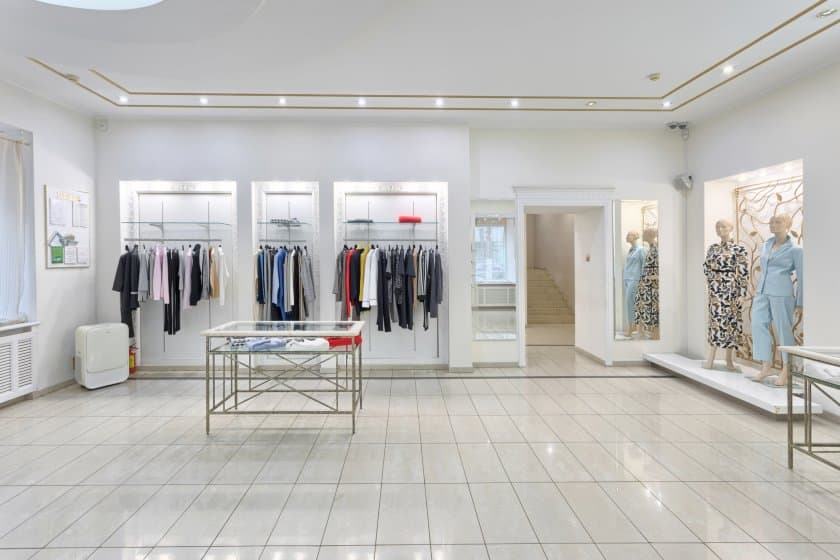
Keeping your racks organized with room for looking around will help shoppers buy more. (Source: ImpeccaBuild)
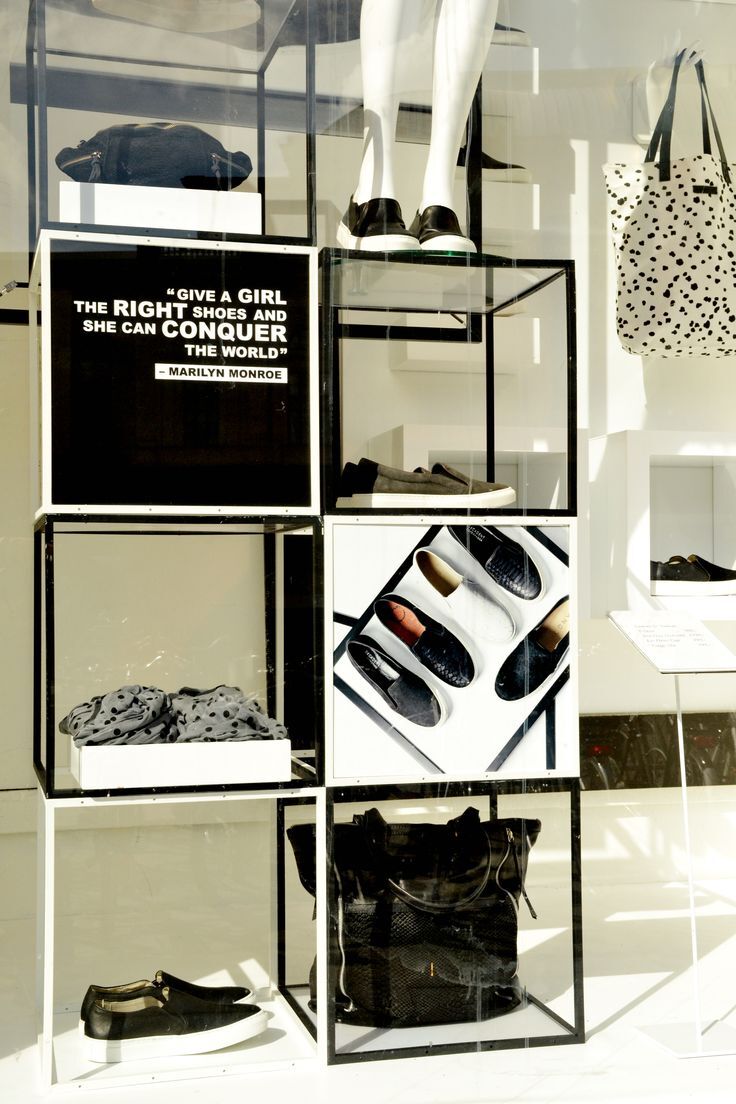
Take a look at how this retailer designed a shelf. They used signage and a mix of products to display them better. (Source: Pinterest)
What if your store is limited to a small space? Don’t fret, here are some best practices for visual merchandising in small spaces:
An organized retail environment is foundational to effective visual merchandising. It enables customers to quickly and easily find what they’re looking for, reduces frustration, and significantly improves their shopping experience. Thoughtful organization also benefits your staff, streamlining store management and product restocking.
Organizing your storefront starts with creating a system for categorizing and displaying your products. This will largely depend on the type and volume of your products and the space you have to display them. For example, where a grocery store with lots of space and merchandise might want to use a categorical organization system, a clothing boutique with fewer items and less space might want to use color categories.
Be deliberate yet flexible — don’t hesitate to experiment with multiple approaches. The ideal organizational system will emerge through observation and adjustment, reflecting your customers’ shopping habits and your store’s unique requirements.

A grocery store organizes its fresh produce in the same zone to make shopping easy and logical. (Source: Southern Living)
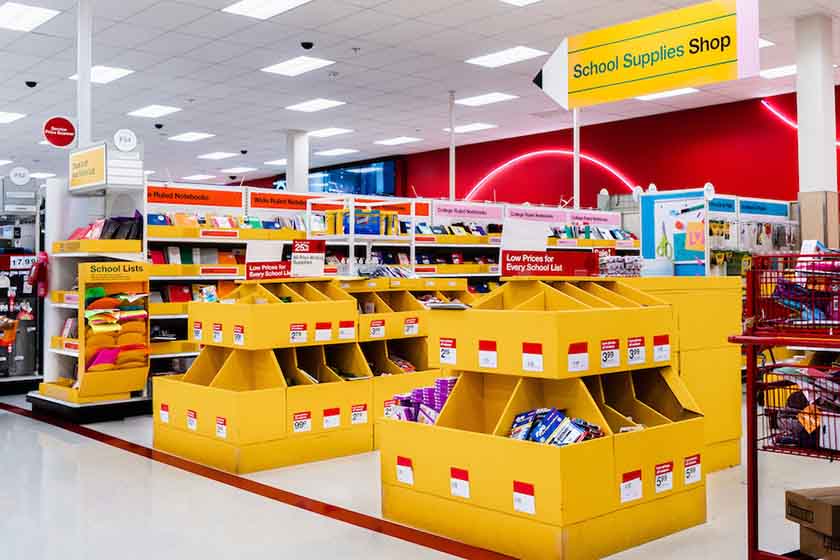
For short, seasonal items, Target stays organized by installing temporary bin displays that can be taken down easily when the time comes. (Source: Adobe Stock)

For stores with lots of different merchandise, categorical aisles are a great organization system for both shoppers and your staff. (Source: Adobe Stock)
Seasonal displays keep your store relevant and appealing by aligning your merchandise with your customers’ current interests, sentiments, and purchasing behaviors. From holidays to seasonal shifts, thoughtfully designed displays — whether they’re focal points, window decorations, or carefully chosen music — create meaningful connections that inspire purchases.
It doesn’t have to be complicated. Most retailers just let one seasonal display replace another during its window of relevance rather than redoing an entire section of their store.
There are a few things, however, to consider when using seasonal displays:
Take a look at some virtual merchandising examples using seasonal displays:
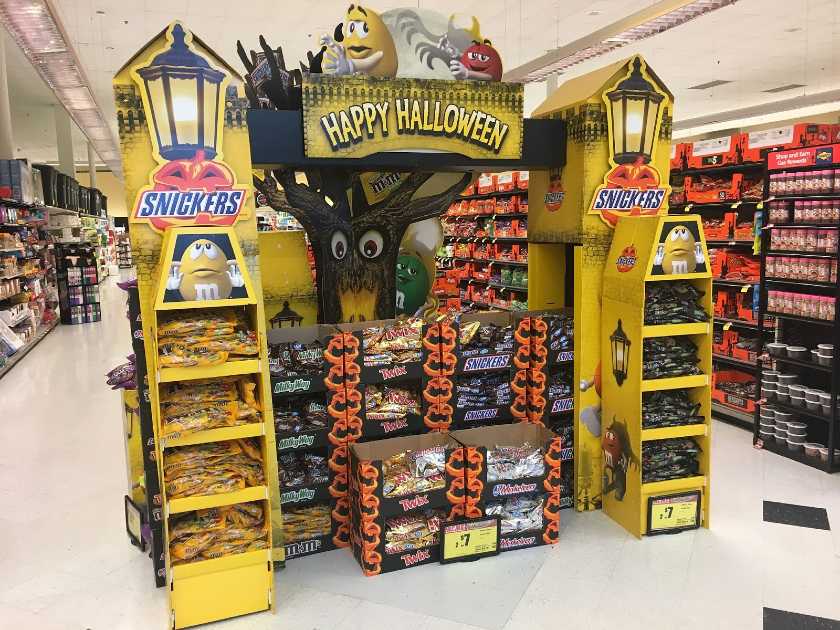
A festive Halloween display advertises candy to shoppers.
(Source: Jersey 101.5)
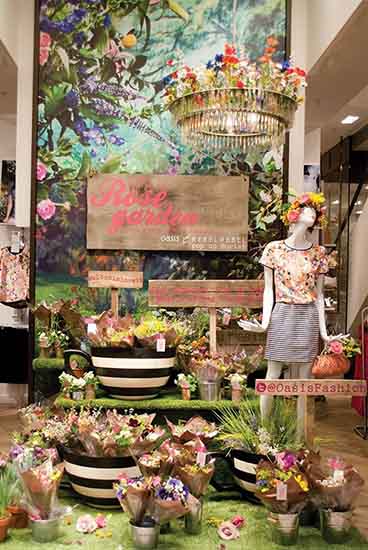
A springtime display draws attention to new spring products and reminds customers of seasonally relevant goods. (Source: Pinterest)

Christmas displays are great for inspiring holiday shoppers and getting them in the gift-giving mood. (Source: KDM Pop Solutions Group)
Your window display is a powerful visual merchandising tool, serving as the first point of contact between your store and passing shoppers. Done well, it captures attention, piques curiosity, and compels customers to step inside.
Whether you’re showcasing your best products, highlighting special promotions, or creating an artistic installation, your window display should provide a clear and appealing glimpse of what customers can expect inside your store, without misleading them.
Here are some ways to be strategic with your window displays:
If you want to learn more about creating window displays that will make customers have to stop and shop, read our full guide to creating stunning window displays.
Here are some window display examples of great visual merchandising:
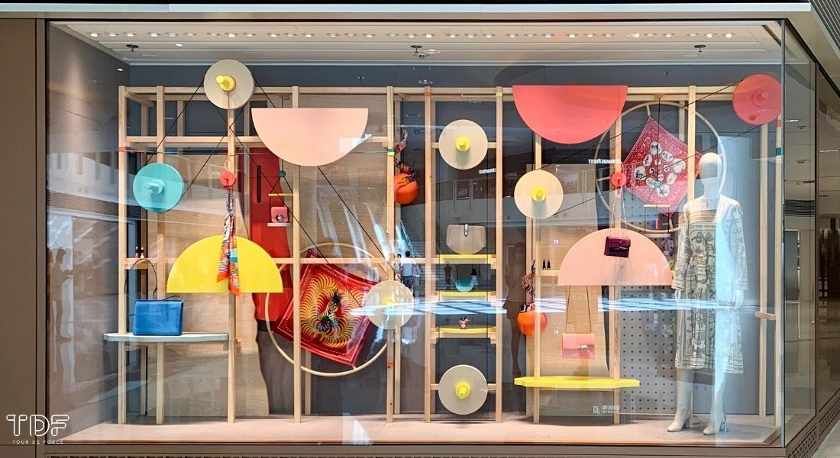
A fun and colorful window display (Source: TDF Asia)
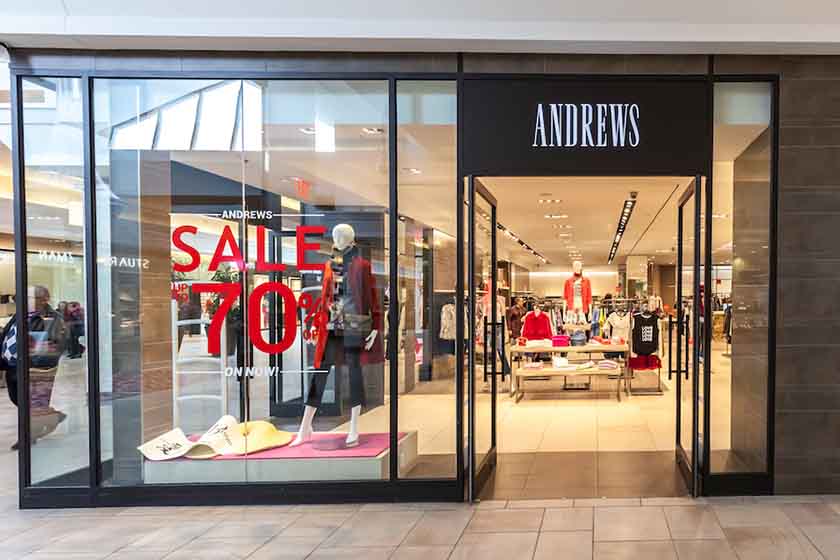
In addition to design, you can display your promotions in your window displays to catch people’s attention. (Source: Adobe Stock)
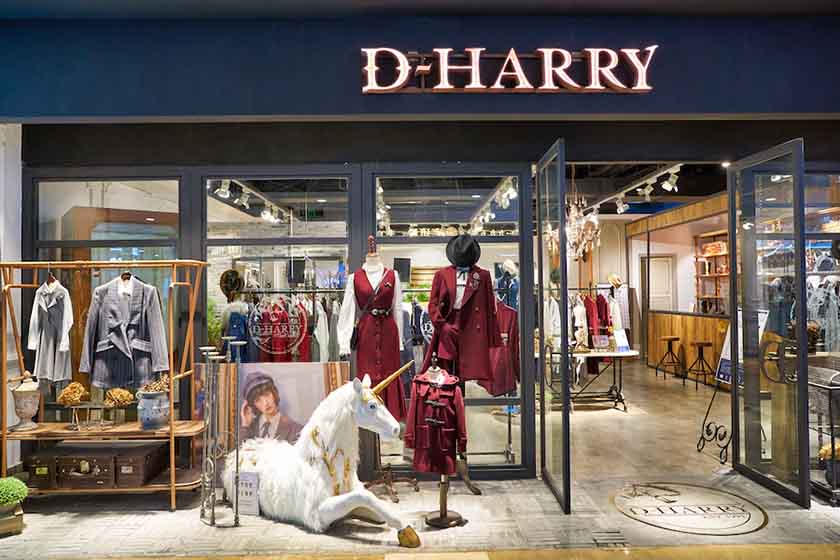
There are no limits on window displays, as they are the one area of your store that does not have to be shoppable. (Source: Adobe Stock)
Leveraging technology amps up your visual merchandising strategy as it can further engage customers with interactive experiences, personalized content, and dynamic presentations. Integrating digital elements into your displays not only captivates shoppers but also provides valuable insights to help you optimize your merchandising approach.
Here are some digital visual merchandising display techniques you can use for your store:
- Use touchscreen kiosks or tablets to let customers explore product details, view options, or access promotions.
- Incorporate screens showcasing dynamic content like videos, special offers, or brand messaging, enhancing engagement.
- Allow customers to virtually try products, like clothing or home decor, using AR apps, creating immersive shopping experiences.
- Include QR codes near products or displays to quickly direct customers to your website, product reviews, or exclusive offers.
Click through the tabs to learn more about the most asked questions about visual merchandising techniques.
Visual merchandising is displaying products in a retail or digital space to highlight their features and benefits with the purpose of attracting, engaging, and motivating customers to purchase.
Branding, engaging the senses, and displaying products effectively are the basic elements of visual merchandising.
Retail product merchandising is displaying 1) the right merchandise, 2) in the right quantities, 3) at the right time, 4) at the right price, 5) in the right place.
The four elements of visual merchandising in a retail store are its 1) exterior (marquees, window displays, and entrance), 2) layout (selling space, personnel space, and display space), 3) interior (the store design like floor and wall coverings, fixtures, and lighting), and 4) display (the way of presenting merchandise).
Visual merchandising strategies involve thoughtfully arranging your store layout, product placement, lighting, signage, displays, and branding to enhance customer experience and drive sales. Effective techniques include using focal points, window displays, strategic product placement, and seasonal or themed presentations.
For online retail, visual merchandising includes clear, high-quality product images, compelling product descriptions, user-friendly website navigation, and personalized product recommendations. Engaging content, organized categories, and consistent branding throughout your site will also improve the customer experience and boost online sales.
Technology enhances visual merchandising through interactive displays, digital signage, augmented reality (AR) experiences, and smart analytics. These tools help retailers better engage customers, personalize shopping experiences, and gain deeper insights into shopper behavior.
Visual merchandising affects every customer-facing aspect of your business. From your brand voice to customer experience to sales, visual merchandising is much more than just arranging products in an aesthetically appealing way.
Keeping all the techniques and tricks that this article reviewed in mind will allow you to create a storefront that is not only beautiful but also in line with what your business stands for and the experience you want to create for your customers.

